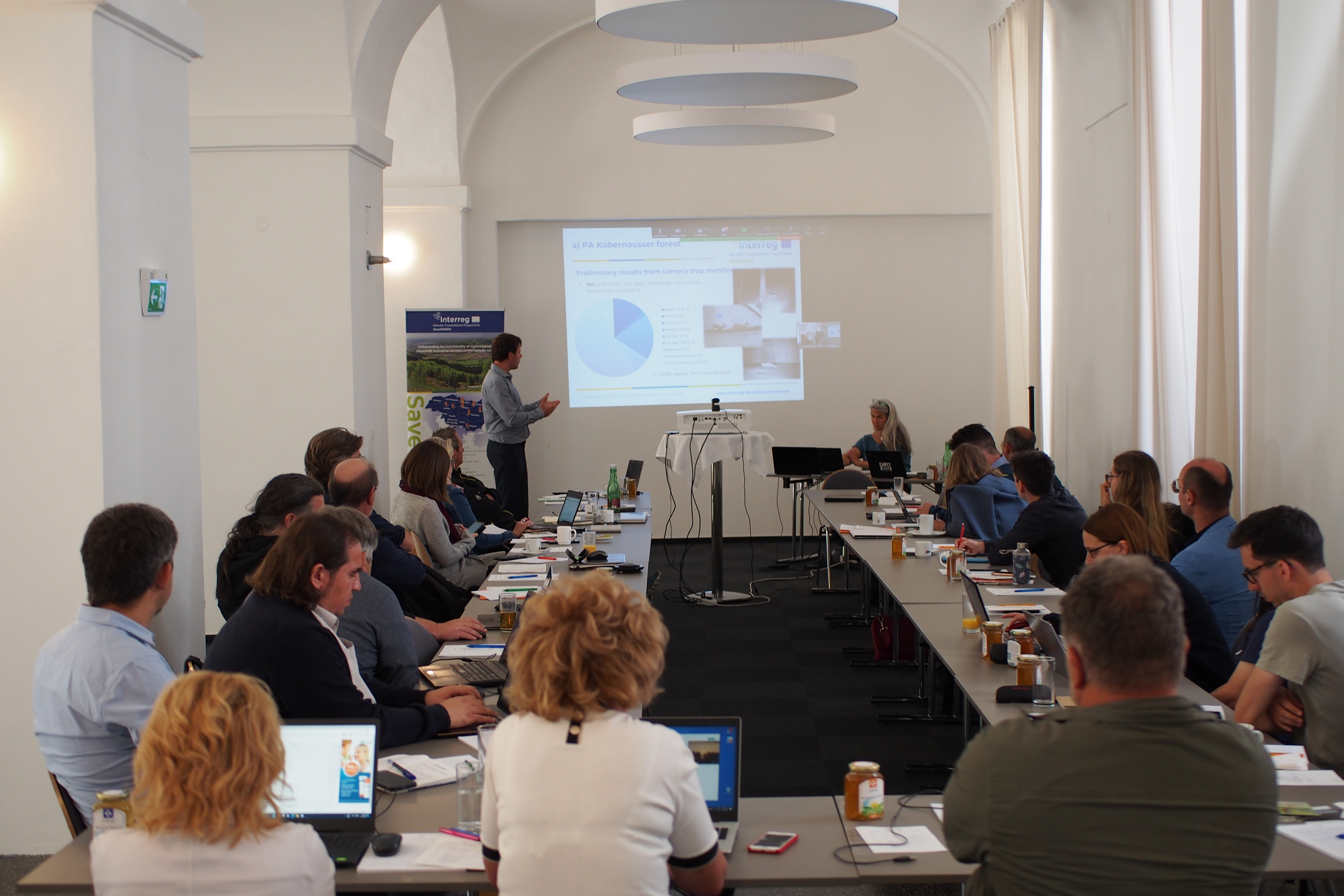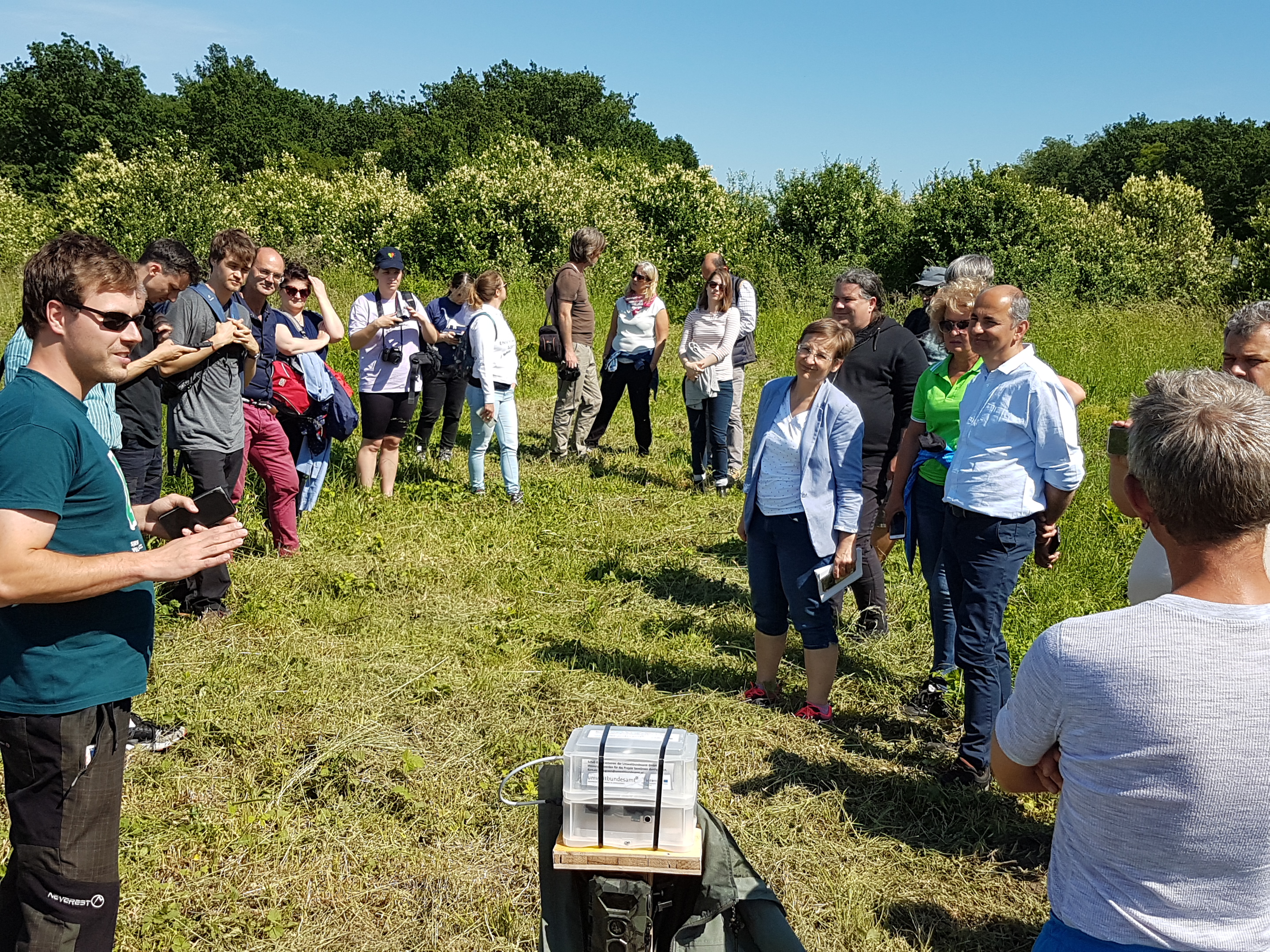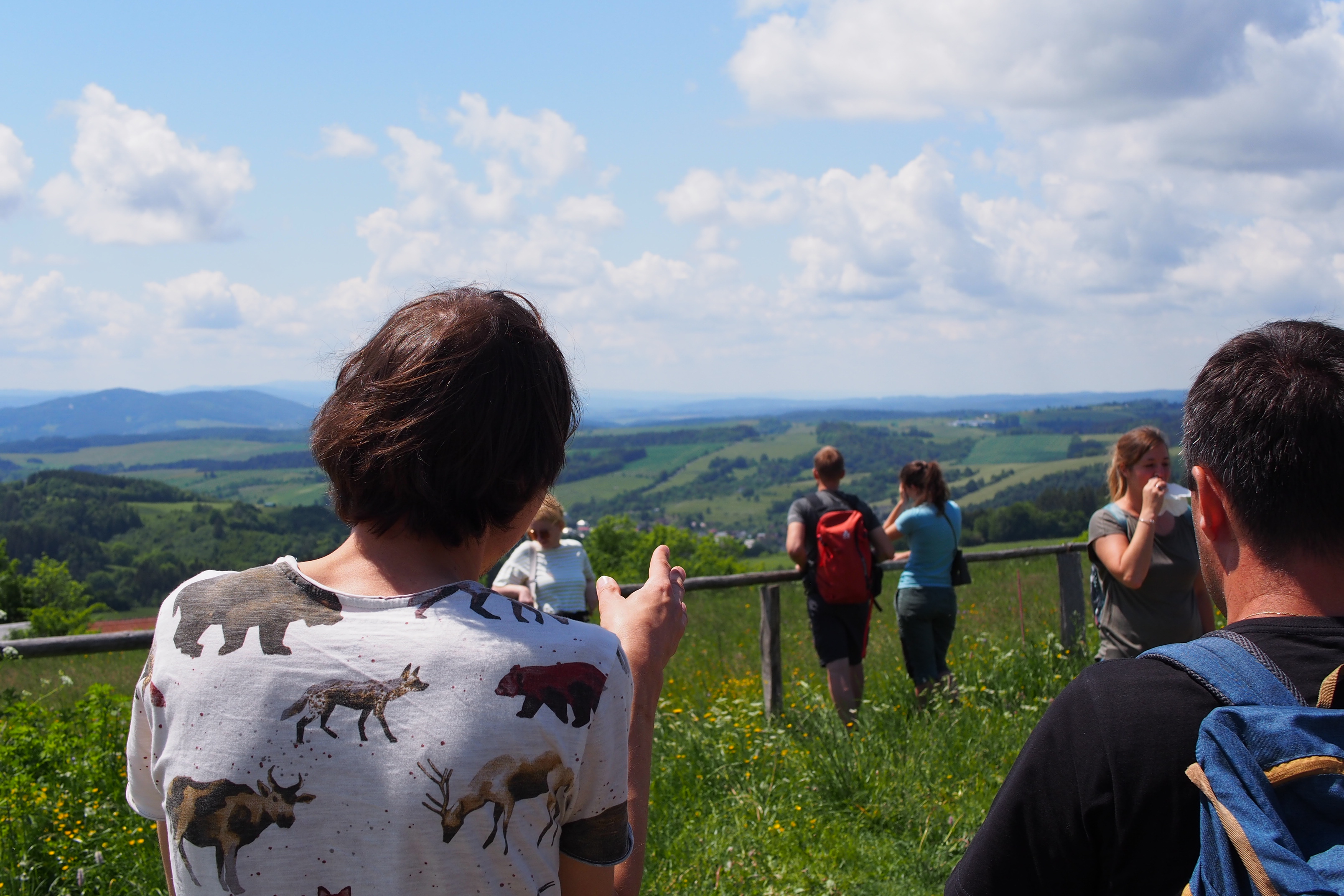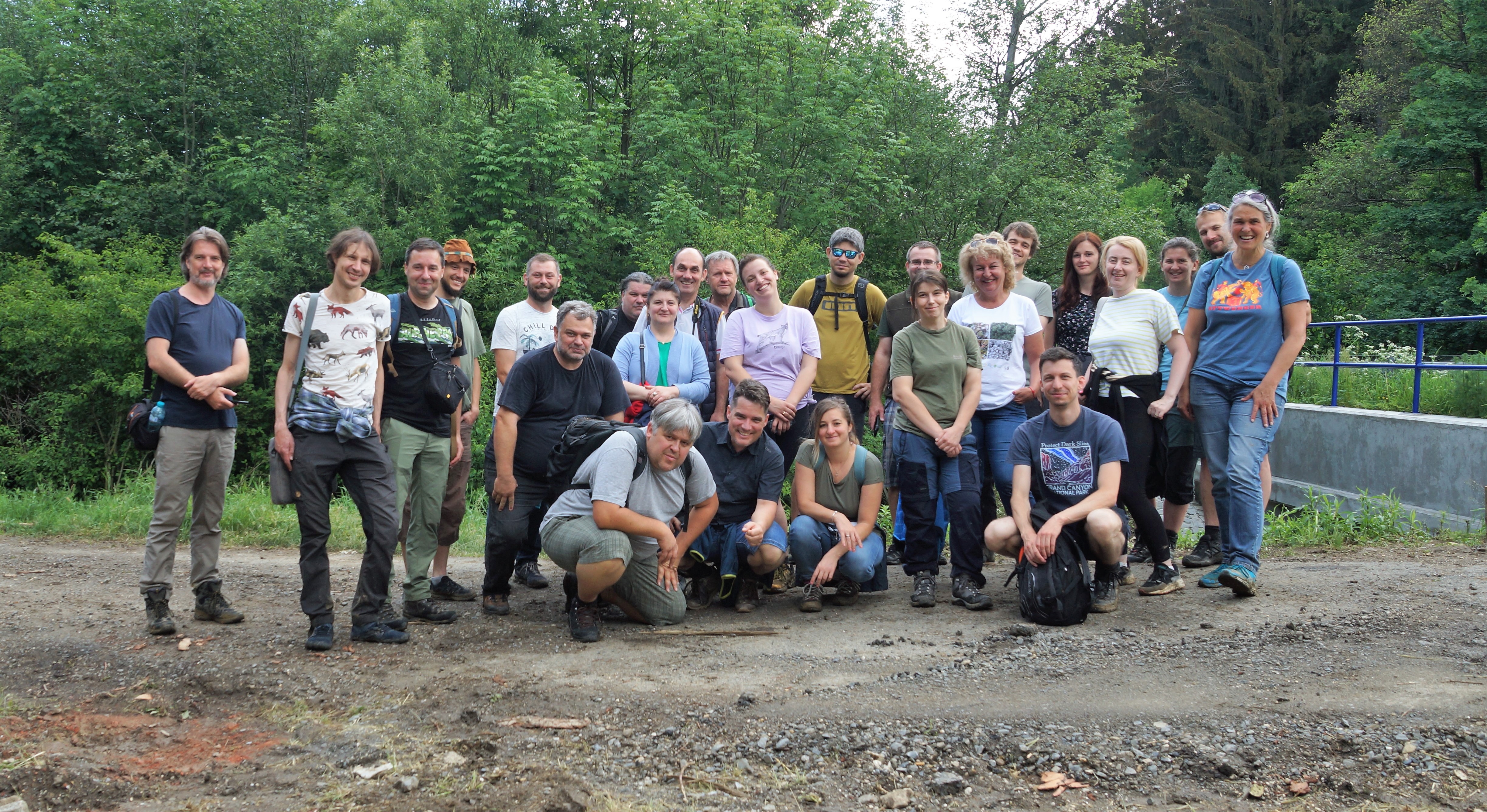SaveGREEN - Successful Austrian-Czech Transnational Experience Exchange Workshop
15-06-2022
From 31 May to 2 June, the SaveGREEN consortium organised the third event in its series of Transnational Experience Exchange Workshops. The two-part workshop began in Austria, where the attendees visited the Pöttsching pilot area situated in the Alpine-Carpathian Corridor, before moving to the Czech Republic, where the Czech project partners introduced their activities in the Beskydy-Kysuce pilot area. The event was co-organized by WWF Central and Eastern Europe, the Environment Agency Austria, Friends of the Earth CZ and the Czech Transport Research Center.
The workshop, which took place both online and on-site in Hainburg an der Donau, Austria, and in Lidečko, Czech Republic, brought together SaveGREEN experts from Bulgaria, Romania, Hungary, Slovakia, Austria and Czechia. Members of the Ukranian team were able to join virtually. The project partners were joined by other experts on ecological connectivity, among them international institutions like the Board of the Infrastructure and Ecology Network Europe (IENE), national authorities, the Austrian Ministry of Climate Action, research institutions, such as the University of Natural Resources and Life Science Vienna (BOKU) or the Technical University of Liberec, sectoral agencies, including the Austrian motorway company ASFINAG and the Bulgarian Southwestern State Foresty Enterprise, protected landscape area representatives and environmental consultancy firms.
The aim of the transnational event was to present the state of ecological connectivity in Austria and Czechia to a team of experts working on the topic in their own respective countries. The presentations and ensuing discussions served to present the specific challenges facing Czech and Austrian proponents of ecological connectivity today, to exchange experiences and ideas with the visiting experts, and to discuss possible mitigation measures and solutions.
Day I: Austria
On the morning of the first day, representatives of the Environment Agency Austria (EAA), the BOKU and ASFINAG introduced the workshop participants to the legal history of ecological corridors in Austria, the importance of the Alpine-Carpathian Corridor, the details of the monitoring system devised during SaveGREEN, and guidelines in Austria for the construction of green bridges. The attendees were particularly struck by the high degree of fragmentation of landscapes in Austria when compared to the eastern project countries as well as the strict division of jurisdictional authority in matters of spatial planning and environmental protection between the federal government and the Länder.

Indoor session at Altes Kloster in Hainburg, Austria (c Christophe Janz)
The first field visit led to the pilot area Pöttsching, where the workshop participants visited two greenbridges. The first, the Pöttsching greenbridge, represented a very promising example of an ecoduct that is accepted by wildlife as a viable crossing structure. The reasons for the bridge’s success are clear: it is covered by a heterogenous plant cover (grassland, shrubs and small trees) and is well-integrated into the surrounding landscape, giving onto a forest on both sides.
The second greenbridge, situated close to Müllendorf, illustrates the challenges facing proponents of ecological connectivity in Austria. The landscape on both sides of the ecoduct is strongly fragmented, dominated by intensively used agricultural fields, numerous settlements, a highway, and a railway, all of which cumulate to render an attempted migration of wildlife through the Alpine-Caprathian corridor very difficult indeed.

Demonstration of light and noise sensors at the green bridge in the Alpine-Carpathian corridor (c Hildegard Meyer)
The SaveGREEN and visiting experts exchanged about possible steps to improve the situation, suggesting for instance to create non-cultivated islands in the corners of the farmers‘ fields that could act as stepping stones, aiding migrating wildlife on their crossing.
Days II & III: Czechia
The following day the participants travelled to Lidečko in the Beskydy-Kysuce pilot area, where they familiarised themselves with the status quo of ecolgical connectivity in Czechia. Despite their geographic proximity and numerous similarities, several marked differences to the Austrian case quickly became apparent. As the Czech landscape is generally much flatter than its Austrian Alpine counterparts, the need for crossing structures across linear infrastructure is far greater (in much of Austria, the mountains and tunnels provide natural crossing possibilities).
Another significant difference was made clear in the presentation by Václav Hlaváč from the Nature Conservation Agency of the Czech Republic, who noted that, as of 2020, the habitats of some specifically protected large mammals have to be considered in spatial planning and constructions plans across the country. Crucially, this legally binding document also includes the exisintg network of ecological corridors in Czechia. Any plan or project threatening to interefere with this network needs to be evaluated by the relevant nature conservation body.
Following presentations on the official Czech methodology of environmental assessment of existing transport infrastructure by Petr Anděl, Technical University of Liberec, the attendees were presented with the specificities of the Beskydy-Kysuce pilot area, and within it, the important ecological corridor connecting the Javorníky mountain range and Bílé Karpaty, an outer part of Western Carpathians. „We monitor this corridor using camera traps and in this way have proven that several protected species such as wild cat, grey wolf, eurasian lynx and golden jackal actively use it. However the corridor is crossed by the first-class road I/49 leading through Lyský pass to Slovakia. A railway runs parallel to the road and in the future, the two mountain ranges may be separated by the planned motorway D49,” explained Radek Kříček, the SaveGREEN project manager for FoE CZ.

View to the landscape in the Beskydy mounains (c Christophe Janz)
The workshop concluded with an excursion to the Lyský pass, where the visiting experts were able to view the Czech monitoring activities of a migration corridor first hand. The field expert, Michal Bojda, FoE CZ, led the participants to a camera trap site, which over the course of the last weeks, recorded numerous migrating animals, among them red and roe deer, badgers, foxes, wild boar and martens.
During the last day of the workshop, the group participated in an excursion led by Michal Bojda (FoE CZ), an expert performing field monitoring for SaveGREEN. The main part of the excursion was a visit to Lyský pass and the location of one of the present camera traps. During the regular check, the camera indicated bottleneck crossings by a variety of mammals such as red deer, roe deer, badger or fox.
Conclusions
The 3-day workshop allowed the SaveGREEN and visiting experts to learn more about the current state of ecological connectivity in Austria and Czechia, as well as the countries‘ most pressing challenges in this respect, and gave them the opprotunity to exchange experiences and ideas for possible solutions from their home countries. The exchanges and lessons learnt in the course of this event proved a renewed reminder of the incalculable value of international cooperation. It is a crucial step for the joint efforts to preserve and improve ecological connectivity in Austria, Czechia, the Carpathians, and beyond.

Group photo during the field trip in the Beskydy mountains (c Petko Tzvetkov)
